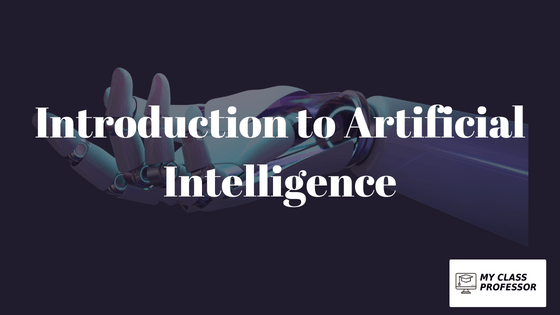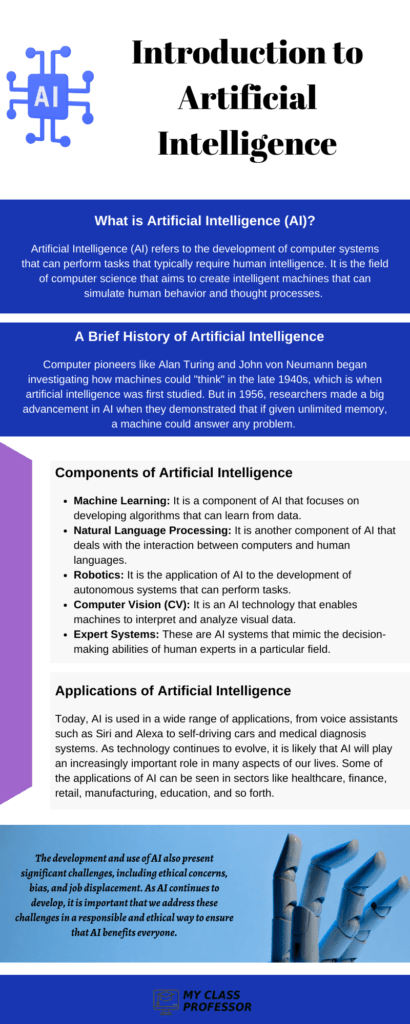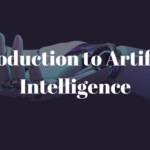
Introduction to Artificial Intelligence
Artificial intelligence (AI) is a rapidly developing field of computer science. It focuses on creating machines that can perform tasks that typically require human intelligence. However, the development of AI has been driven by the increasing availability of large datasets and the computational power to process them.
In this blog post, we will provide a comprehensive introduction to artificial intelligence and explore its history, various subfields, and applications. But, first, let us help you know what is Artificial Intelligence.
What is Artificial Intelligence (AI)?
Artificial intelligence, or AI, is the replication of human intellect in devices that have been designed to reason and acquire knowledge similarly to people. The goal of computer science is to build intelligent devices that can mimic human cognition and behavior. In essence, AI involves developing algorithms and models that can analyze and interpret complex data, recognize patterns, and make predictions based on that analysis.
However, to further your knowledge about Artificial Intelligence, you can enroll yourself in an online course provided by various universities and educational platforms. Also, if you ever feel the need to hire someone to do my online course for me while pursuing the course, you can take online class help websites available on the internet to make your online course journey easier and smooth.
Read Here: Introduction to Coding: A Beginner’s Guide to Programming
A Brief History of Artificial Intelligence
In the late 1940s, computer pioneers like Alan Turing and John von Neumann started looking into how machines might “think”. Which is when artificial intelligence was first studied. However, in 1956, researchers made a big advancement in AI when they demonstrated that if given unlimited memory, a machine could answer any problem. Thus, it led to the development of the General Problem Solver (GPS) software.
Additionally, research on the application of artificial intelligence to real problems was concentrated throughout the following two decades. With the help of this invention, expert systems were created, which allow machines to learn from their past errors and make predictions based on a body of gathered data.
AI research produced substantial advancements in the early twenty-first century in fields including speech recognition, computer vision, and natural language processing. Machine learning algorithms, which can analyze massive volumes of data and find patterns without being explicitly programmed, have played a crucial role in the current wave of innovation. Furthermore, AI study involves a bit of maths as well and students can hire someone to take my online math class if they need any help.

Explore the Different Types of Artificial Intelligence
There are primarily four main types of AI. These are:
Reactive Machines
Reactive machines take in their surroundings and respond accordingly. They can respond to commands and requests precisely. However, they are not able to store information or make decisions in real time based on prior experiences. Therefore, reactive machines can be used to carry out a restricted range of specialized tasks.
Examples: The recommendation engine on Netflix and IBM’s Deep Blue (a chess player).
Limited Memory
AI with limited memory can preserve past information and forecasts for use in information collecting and decision-making. In simple terms, it searches the past for hints that might indicate future developments. limited memory AI is produced when a team continually trains a model to evaluate and use fresh data, or when an AI environment is designed to allow models to be automatically trained and regenerated.
Examples: Chatbots (like ChatGPT) and self-driving cars.
Theory of Mind
The concept of the theory of mind AI is still unrealized. It represents the concept of an AI system that can sense and comprehend human emotions to forecast future behavior and come to its conclusions.
Examples: Virtual assistants with empathy
Self-Awareness
Artificial intelligence with self-awareness, or a feeling of self, is referred to as self-aware AI. There isn’t any AI like this at the moment. On the other hand, theoretically, self-aware AI is capable of feeling human-like emotions and is aware of both its existence and that of others.
Examples: AI ethics and bias mitigation
Understanding all these types of AI is crucial if you want to make a career in the field. All it requires your time and dedication to master artificial intelligence.
What are the Components of Artificial Intelligence?
Artificial intelligence (AI) uses a variety of technologies, methods, and tactics to create intelligent computers that can imitate human cognitive capacities. Here are a few of the components that make up AI:
- Machine Learning: A part of AI called machine learning is concerned with creating algorithms that can learn from experience. These algorithms can be used to recognize patterns, make predictions, and perform various other tasks.
- Natural Language Processing: Natural Language Processing (NLP) deals with the interaction between computers and human languages. Furthermore, it involves the creation of algorithms and models. It allows computers to meaningfully and effectively comprehend, interpret, and produce human language.
- Robotics: Robotics is the use of AI to create autonomous systems that can do activities that traditionally call for human involvement. However, these systems might be anything from basic home appliances to intricate industrial robots.
- Computer Vision (CV): It is an AI technology that enables machines to interpret and analyze visual data from the world around them.
- Expert Systems: These artificial intelligence (AI) systems imitate the judgment skills of people who are specialists in a certain topic. They analyze data, offer suggestions, or make judgments using algorithms and knowledge-based methodologies.
These are some of the fundamental components that make up AI. Furthermore, these components must be understood as part of the course material when a student begins studying AI. However, they might also need to have knowledge of stats depending on the course. If they face difficulty in comprehending stats, they can easily ask someone to take my online stats class for me.
Applications of Artificial Intelligence
Today, AI is used in a wide range of applications. From voice assistants such as Siri and Alexa to self-driving cars and medical diagnosis systems, it is everywhere. AI is probably going to become more significant in many facets of our existence. The following is a list of some applications of AI:
- Healthcare: AI is used to create novel medications, personalize medical treatment regimens, and identify disorders by analyzing medical imagery.
- Finance: Trading, money management, and fraud detection all make use of AI. Additionally, financial counseling and customer support are offered through chatbots.
- Retail: Recommendation systems, inventory control, and demand forecasting all make use of AI.
- Manufacturing: Utilising AI can increase productivity, quality assurance, and preventative maintenance. Moreover, robotics and automation powered by AI are also being used to optimize manufacturing processes.
- Education: AI is being utilized to deliver adaptive learning experiences, evaluate student progress, and personalize learning. AI also helps students in knowing about where to pay someone to take my online English class as well.
These are just a few instances of how AI is reshaping several sectors of the economy and enhancing our daily lives. As AI technology advances, we can expect to see more innovative applications across various fields.
Also Read: Online Data Science Course – Why Should You Enrol?
Artificial Intelligence: How Does It Work?
Systems using artificial intelligence operate by utilizing several kinds of AI methods. These include the following:
Deep Learning
Deep learning processes inputs via a neural network architecture that draws inspiration from biology. The data is processed through several hidden layers in neural networks. It enables the machine to learn “deeply,” form connections, and weigh input for optimal outcomes.
Neural Networks
Neural networks process information by simulating the architecture of the human brain. Every neural network is made up of several connected neuron models, also known as nodes, that communicate with one another to exchange information. They enable machines to learn from errors and spot patterns and linkages in data.
Cognitive Computing
Cognitive computing algorithms try to simulate a human brain by analyzing text, audio, images, and objects in a way that a human does and attempting to produce the intended result.
However, One has to carefully review all of artificial intelligence’s subdomains and understand how those domains might be used in a variety of industry contexts to completely understand how artificial intelligence functions. Another option to assist you obtain an in-depth understanding is to enroll in an online artificial intelligence course.
FAQs
| What are the advantages of studying artificial intelligence? Studying artificial intelligence offers numerous advantages. It includes career opportunities in various industries, the ability to develop innovative solutions, and advancements in technology. |
| How do online courses help learn AI? Online courses offer a flexible and accessible way to learn AI. It gives students the chance to develop their knowledge and abilities while working on actual projects at their speed. |
| Who is the father of AI? The father of artificial intelligence is known as John McCarthy. Computer scientist John McCarthy was an American. It was he who first used the term “artificial intelligence”. |




